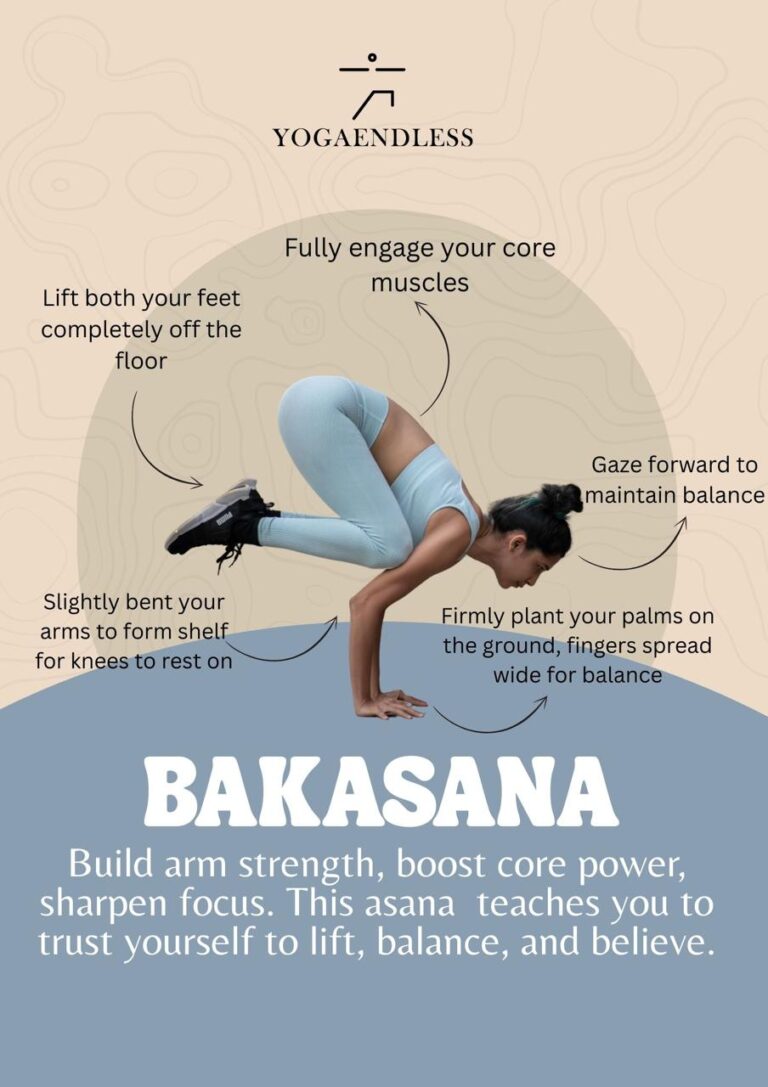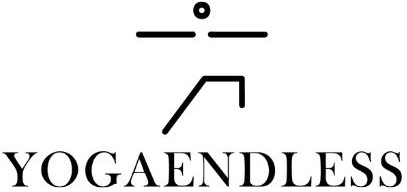Bakasana (Crow Pose): Embrace Balance, Strength & Stillness

Bakasana, also known as Crow Pose, is often one of the first arm balances introduced in yoga practice. It symbolizes the perfect blend of strength, focus, and courage. At first glance, it may appear intimidating, but with patience and proper technique, it becomes an empowering and exhilarating posture.
This pose strengthens the arms, core, and wrists while improving balance and mental clarity. More than just a physical feat, Bakasana teaches the art of trust — in your body, breath, and the process of growth.
What Is Bakasana (Crow Pose)?
Bakasana comes from the Sanskrit:
- Baka = Crow or Crane
- Asana = Pose
In this arm balance, the knees are tucked close to the upper arms, and the entire body is lifted off the ground and balanced on the hands. It requires core strength, arm engagement, and mental steadiness to fly into the pose.
Other Names for This Pose
- Crow Pose (commonly used)
- Crane Pose (often used interchangeably, though sometimes used for a straighter-armed variation)
- Kakasana (a variation with bent elbows — often taught first to beginners)
- Arm Balance Pose (descriptive term)
How to Do Bakasana (Step-by-Step Instructions)
- Start in a squatting position (Malasana)
- Feet hip-width apart
- Knees wide, heels on the floor (use a block if heels don’t touch)
- Feet hip-width apart
- Place your palms flat on the mat in front of you
- Shoulder-width apart
- Fingers spread wide for grip and balance
- Keep your gaze forward, not down
- Shoulder-width apart
- Bend your elbows slightly
- Create a stable base
- Engage your arms like in Chaturanga
- Create a stable base
- Lift your hips and bring your knees to your upper arms
- Knees resting on the triceps
- Tip: The closer the knees are to your armpits, the easier it is to balance
- Knees resting on the triceps
- Shift your weight forward slowly
- Come onto the balls of your feet
- Engage your core and look ahead
- Come onto the balls of your feet
- Lift one foot off the ground
- If balanced, try lifting the other foot too
- If balanced, try lifting the other foot too
- Keep the toes together and heels up
- Draw the belly in
- Breathe steadily and focus forward
- Draw the belly in
- Hold the pose for 3–5 breaths
- Gradually build up your hold time
- Gradually build up your hold time
- To release, lower your feet back down gently
- Return to a squat or kneeling position
Benefits of Bakasana (Crow Pose)
- Builds upper body strength in arms, shoulders, and wrists
- Strengthens the core and abdominal muscles
- Improves balance, stability, and focus
- Develops mental discipline and self-trust
- Enhances body awareness and coordination
What Not to Do (Common Mistakes)
- Don’t look down. Always keep your gaze slightly forward to maintain balance
- Avoid locking the elbows. A slight bend supports control
- Don’t let your knees slide off your arms. Engage the legs and core
- Don’t collapse into the wrists. Spread your fingers and distribute weight evenly
- Avoid this pose if you have wrist injuries or are pregnant
Tips for Beginners
- Use a block or cushion in front of you in case you fall forward
- Try lifting one foot at a time to get comfortable
- Practice Plank and Chaturanga to build arm and core strength
- Use a wall behind you for safety and confidence
- Practice on a padded surface or yoga mat to reduce the fear of falling
Bakasana is not just a pose — it’s a lesson in facing fear with focus and determination. It’s a journey from hesitation to flight. Whether or not your feet leave the ground today, practicing this pose brings strength, courage, and a deep connection between body and breath. With time, you’ll find yourself not only balancing in the pose — but in life too.
Balance. Breathe. Believe.
